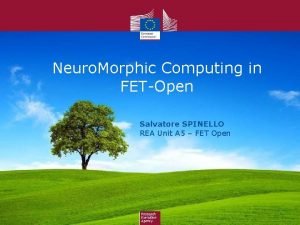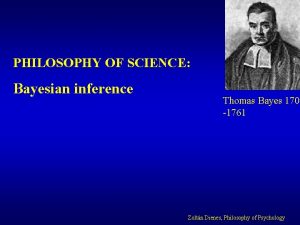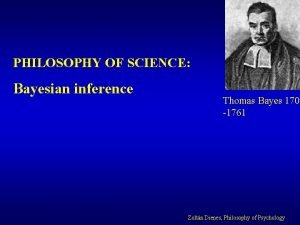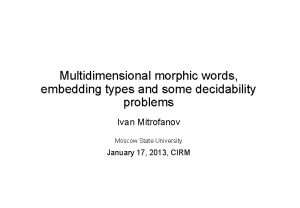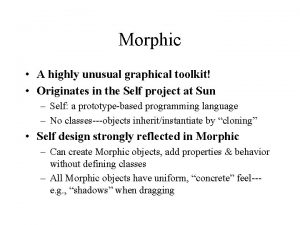Neuro Morphic Computing in FETOpen Salvatore SPINELLO REA




- Slides: 4

Neuro. Morphic Computing in FET-Open Salvatore SPINELLO REA Unit A 5 – FET Open

REA unit A 5 - FET Open facts and figures Mission, • Unit created in May 2014 (Research Executive Agency) • 43 staff members • Close cooperation with parent unit CNECT. C. 3 • Managing FET-Open, supporting early-stage joint science and technology research around radically new ideas • Early detection of new areas • Attracting innovation players

Interdisciplinarity in FET-Open 5 disciplines 4 disciplines 3 disciplines 2 or-1 less disciplines Civil, Mechanical & Aerospace Eng 11% Maths & Compute r Sc 11% 43% Electroni c, Robotics & Automat Eng Medicin e& Medical Eng SSH 35% Physical Sc Creating the architectural design for Neuro. Morphic Computing requires an integrative, interdisciplinary approach between computer scientists, engineers, physicists, and materials scientists Environmen t Sc & Eng. Bio Sc & Biotech Materials Eng Chemic al Sc

The development of neuromorphic devices also requires the use of strongly correlated, possibly complex, heterogeneous materials. Goal: engineering of new classes of switches exploiting the abrupt phase-change Metal. Insulator-Transition (MIT) in materials and at temperatures that make them interesting for electronic circuits and systems by their performance, energy efficiency and scalability The proposal focuses on smart design and exploitation of the unique properties of the phase-change (Beyond CMOS switches), by targeting with the same technology platform: (i) von-Neumann steep-slope logic devices and circuits, to extend CMOS with novel functionality and energy efficiency (ii) uniquely reconfigurable energy efficient radio-frequency circuit functions from 1 to 100 GHz, (iii)unconventional scalable neuristors exploiting the hysteretic RC switching behaviour for neuromorphic computation, and (iv)disruptive classes of solid-state ionitronic devices for neuromorphic computation, exploiting non-volatile memory effects Coordinator ECOLE POLYTECHNIQUE FEDERALE DE LAUSANNE (Switzerland) Participants AMO GMBH (Germany) IBM RESEARCH (Switzerland) MAX PLANCK (Germany) THALES SA (France) UNIVERSITY OF CAMBRIDGE (United Kingdom) EU contribution: 3 883 412 €
